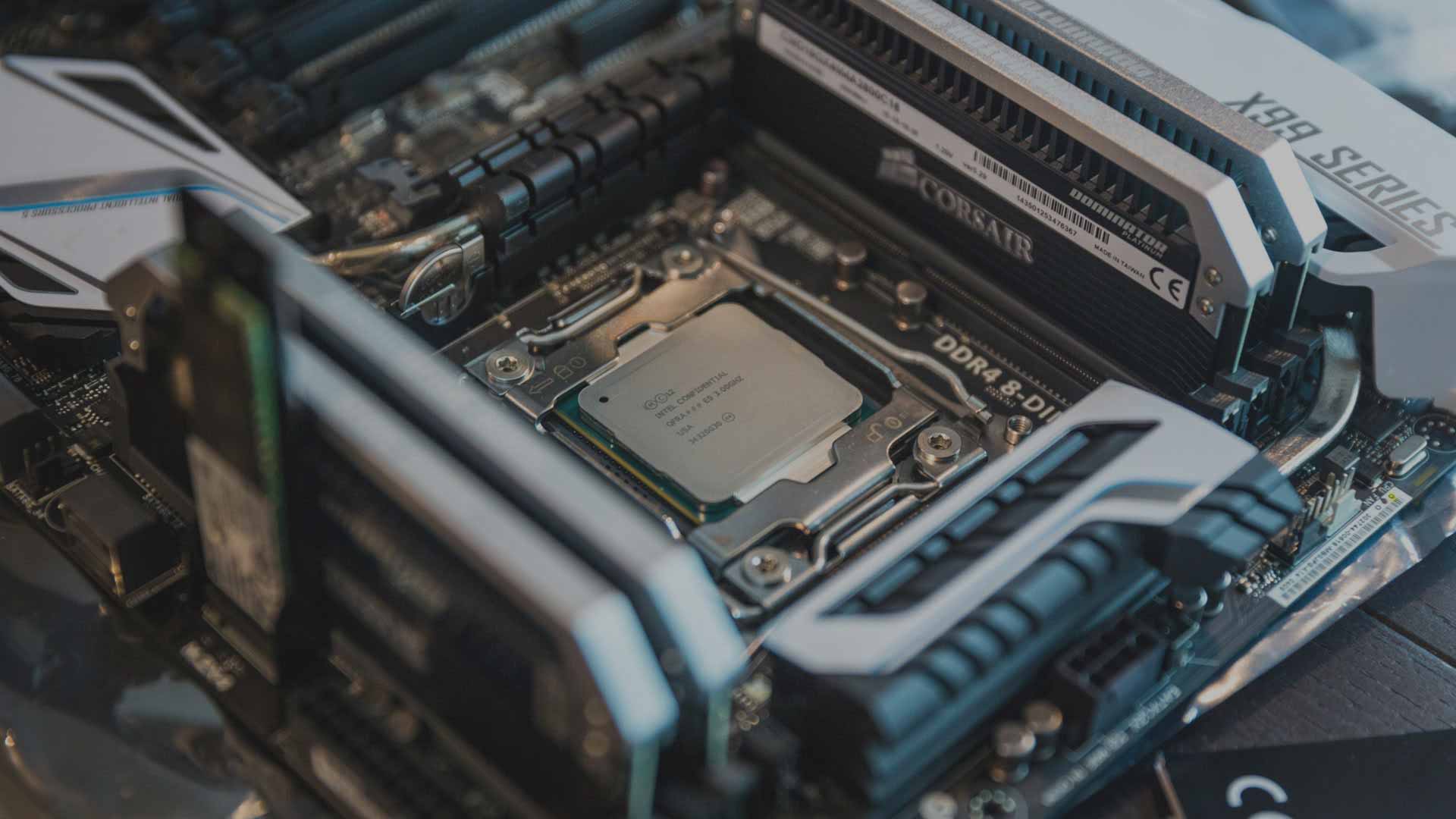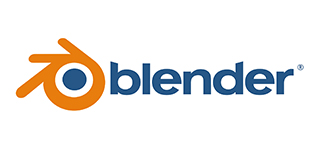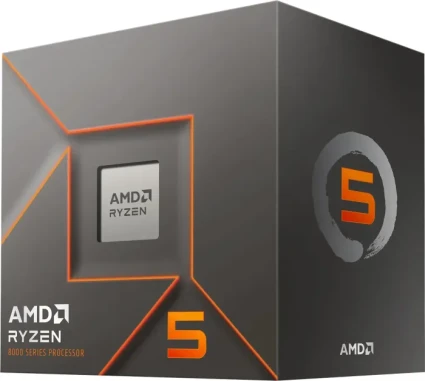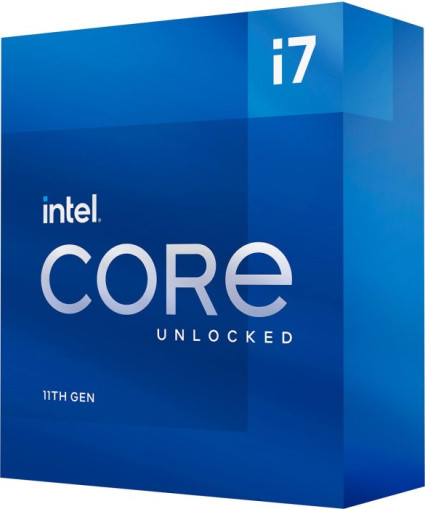
AMD Ryzen 5 8400F vs. Intel Core i7-11700K
In diesem Vergleich von AMD Ryzen 5 8400F versus Intel Core i7-11700K vergleichen wir die technischen Daten der beiden CPUs. Welcher Prozessor ist schneller? Hier gibt es FPS & Benchmarks in Gaming und Anwendungen.

Allgemeine Informationen
| Günstigster Preis |
|
|
| Serie | Ryzen 8000 | Intel Core i-11000 |
| Chip-Architektur | Zen 4 | Cypress Cove |
| Codename | Phoenix | Rocket Lake-S |
| Produktname | AMD Ryzen 5 8400F | Intel Core i7-11700K |
Spezifikationen
Die Anzahl der Rechenkerne, die maximale Taktrate und die Größe des Cache können sich auf die Leistung in Spielen und Anwendungen auswirken. Mit 6 Kernen bietet der AMD Ryzen 5 8400F deutlich weniger Kerne als der Intel Core i7-11700K mit 8 Rechenkernen. Der maximale Takt liegt beim AMD Ryzen 5 8400F mit 4.70 GHz etwas niedriger als beim Intel Core i7-11700K mit 5.00 GHz. Der Cache ist beim AMD Ryzen 5 8400F mit 6 MB L2-Cache + 16 MB L3-Cache zu 4 MB L2-Cache + 16 MB L3-Cache deutlich höher als beim Intel Core i7-11700K.
| Kerne (Gesamt) | 6 | 8 |
| Anzahl P-Cores | 6C | 8C |
| Anzahl E-Cores | - | - |
| Basis-Takt | 4.20 GHz | 3.60 GHz |
| Takt P-Cores | 4.20 GHz | 3.60 GHz |
| Takt E-Cores | - | - |
| Turbo-Takt | 4.70 GHz | 5.00 (Turbo Boost Max 3.0) GHz |
| Turbo P-Cores | 4.70 GHz | 5.00 (Turbo Boost Max 3.0) GHz |
| Turbo E-Cores | - | - |
| Gesamter L2-Cache | 6 MB | 4 MB |
| Gesamter L3-Cache | 16 MB | 16 MB |
| Fertigung | TSMC 4 nm | Intel 14 nm+++ |
| Rechenleistung | - | - |
| Leistungsaufnahme (TDP) | 65W 45W cTDP-down |
125W 95W cTDP-down (3.10GHz) |
Mainboard-Kompatibilität
Während der AMD Ryzen 5 8400F den AMD AM5 Sockel nutzt, ist der Intel Core i7-11700K mit Mainboards für den Sockel Intel 1200 kompatibel. Die genaue Chipsatz-Eignung und die unterstützten PCIe-Lanes können Sie der Tabelle entnehmen.
| Sockel | AMD AM5 | Intel 1200 |
| Chipsatz-Eignung | A620, B650, B650E, B840, B850, X670, X670E, X870, X870E (modellabhängig: PRO 600, PRO 665, X600) | B560, H470, H510, H570, Q470, W480, W580, Z490, Z590 |
| PCIe-3.0-Lanes | - | - |
| PCIe-4.0-Lanes | 20x (verfügbar: 16) | 20x |
| PCIe-5.0-Lanes | - | - |
RAM-Kompatibilität
Während Sie beim AMD Ryzen 5 8400F bis zu 256 GB vom Typ DDR5 im Dual Channel verbauen können, unterstützt der Intel Core i7-11700K bis zu 128 GB DDR4 Arbeitsspeicher.
| Speicher-Controller | DDR5 | DDR4 |
| Anzahl Speicherkanäle | Dual Channel | Dual Channel |
| max. Speichermenge | 256 GB | 128 GB |
| ECC-Unterstützung | - | - |
Grafik
| iGPU | - | ✓ |
| iGPU-Modell | - | Intel UHD Graphics 750 |
| iGPU-Takt | - | 0,35-1,30GHz |
| iGPU-Einheiten | - | 2Xe/32EU/256SP |
| iGPU-Rechenleistung | - | 0.67 TFLOPS (FP32) |
| iGPU-Architektur | - | Xe-LP / Gen 12.1, Codename "Rocket Lake GT1" |
| iGPU-Interface | - | DP 1.4a (5120x3200@60Hz), eDP 1.4a (5120x3200@60Hz), HDMI 2.0b (4096x2160@60Hz) |
| iGPU-Funktionen | - | 3x Display Support, Intel Clear Video HD, Intel InTru 3D, Intel Quick Sync Video, AV1 decode, H.265 encode/decode, VP9 encode/decode, HDCP 2.3, DirectX 12.1, OpenGL 4.5, OpenCL 3.0, Vulkan 1.0, max. 64GB iGPU-Speicher |
Sonstiges
| Freier Multiplikator | ✓ | ✓ |
| Heatspreader-Kontaktmittel | - | Metall/verlötet |
| Temparatur max. | 95°C (Tjmax) | 100°C (Tjunction) |
| Fernwartung | - | ✓ (Intel vPro) |
| Einführung | 2024/Q2 (1.4.2024) | 2021/Q1 (30.3.2021) |
| Herstellergarantie | 3 Jahre bei AMD® Boxed-Prozessoren (Info EN) | 3 Jahre bei Intel® Boxed-Prozessoren (Info DE/Info EN) |
CPU-Funktionen
| AES-NI | ✓ | ✓ |
| AVX | ✓ | ✓ |
| AVX2 | ✓ | ✓ |
| Boot Guard | - | ✓ |
| CET | - | - |
| DL Boost | - | ✓ |
| EIST | - | ✓ |
| GNA 3.0 | - | - |
| Idle States | - | ✓ |
| Instruction Set | - | ✓ |
| ISM | - | - |
| MBEC | - | - |
| Optane Memory Support | - | ✓ |
| OS Guard | - | ✓ |
| Secure Key | - | ✓ |
| Speed Shift | - | - |
| SSE4.1 | ✓ | ✓ |
| SSE4.2 | ✓ | ✓ |
| Thermal Monitoring | - | ✓ |
| VMD | - | - |
| VT-d | - | ✓ |
| VT-x | - | ✓ |
| VT-x EPT | - | ✓ |
| XD Bit | - | ✓ |
Spiele

- AMD Ryzen 5 8400FAVG100.00 %1%100.00 %
- Intel Core i7-11700KAVG106.08 %1%104.99 %

- Intel Core i7-11700KAVG179.7 FPS1%120.5 FPS
- AMD Ryzen 5 8400FAVG175.6 FPS1%134.8 FPS

- Intel Core i7-11700KAVG451.8 FPS1%264.5 FPS
- AMD Ryzen 5 8400FAVG434.1 FPS1%266.5 FPS

- Intel Core i7-11700KAVG140.2 FPS1%87.3 FPS
- AMD Ryzen 5 8400FAVG137.6 FPS1%84.3 FPS

- Intel Core i7-11700KAVG181.5 FPS1%133.5 FPS
- AMD Ryzen 5 8400FAVG153.2 FPS1%111.6 FPS

- Intel Core i7-11700KAVG126.8 FPS1%88.7 FPS
- AMD Ryzen 5 8400FAVG113.4 FPS1%77.6 FPS

- Intel Core i7-11700KAVG207.8 FPS1%131.1 FPS
- AMD Ryzen 5 8400FAVG191.8 FPS1%117.1 FPS

- Intel Core i7-11700KAVG70.5 FPS1%46.9 FPS
- AMD Ryzen 5 8400FAVG66.6 FPS1%48.7 FPS

- Intel Core i7-11700KAVG186.3 FPS1%110.7 FPS
- AMD Ryzen 5 8400FAVG194.4 FPS1%104.9 FPS

- AMD Ryzen 5 8400FAVG1.48 FPSIntel Core i7-11700KAVG0.62 FPS

- AMD Ryzen 5 8400FAVG4.13 FPSIntel Core i7-11700KAVG1.98 FPS
Produktivität
Produktivität

- AMD Ryzen 5 8400FAVG100.00 %Intel Core i7-11700KAVG97.93 %

- AMD Ryzen 5 8400FPKT89074 PunkteIntel Core i7-11700KPKT88592 Punkte

- AMD Ryzen 5 8400FPKT1157 PunkteIntel Core i7-11700KPKT1106 Punkte

- AMD Ryzen 5 8400FPKT716 PunkteIntel Core i7-11700KPKT713 Punkte

- AMD Ryzen 5 8400FSEK415 SekundenIntel Core i7-11700KSEK400 Sekunden

- AMD Ryzen 5 8400FPKT765 PunkteIntel Core i7-11700KPKT767 Punkte

- AMD Ryzen 5 8400FPKT2323 PunkteIntel Core i7-11700KPKT2533 Punkte

- AMD Ryzen 5 8400FPKT12103 PunkteIntel Core i7-11700KPKT11337 Punkte

- AMD Ryzen 5 8400FSEK97 SekundenIntel Core i7-11700KSEK99 Sekunden




